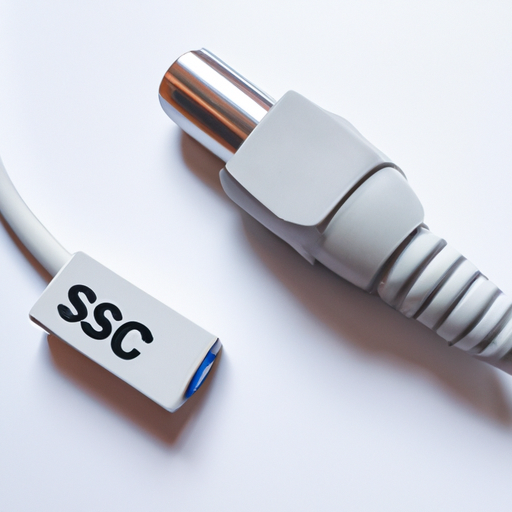Interconnection devices are essential components in modern technology, enabling the seamless connection of various devices and systems. These devices play a crucial role in ensuring the smooth operation of networks, communication systems, and other interconnected technologies. To ensure the reliability, performance, and safety of interconnection devices, various product standards have been established by regulatory bodies and industry organizations.
Product standards for interconnection devices cover a wide range of specifications and requirements, including design, performance, safety, and interoperability. These standards are developed through a collaborative process involving industry experts, regulatory agencies, and other stakeholders to ensure that interconnection devices meet the necessary requirements for quality and reliability.
One of the key product standards for interconnection devices is the International Electrotechnical Commission (IEC) 60603 series, which covers connectors for electronic equipment. This standard specifies the requirements for connectors used in various electronic devices, including computers, telecommunications equipment, and consumer electronics. The IEC 60603 series defines the mechanical, electrical, and environmental characteristics of connectors, ensuring their compatibility and reliability in different applications.
Another important product standard for interconnection devices is the Institute of Electrical and Electronics Engineers (IEEE) 802.3 series, which covers Ethernet networking standards. These standards define the specifications for Ethernet networks, including the physical layer, data link layer, and network management protocols. The IEEE 802.3 standards ensure the interoperability and performance of Ethernet devices, enabling seamless communication between different devices and systems.
In addition to these standards, there are also industry-specific standards for interconnection devices, such as the Telecommunications Industry Association (TIA) standards for telecommunications equipment and the Society of Automotive Engineers (SAE) standards for automotive connectors. These standards define the requirements for interconnection devices used in specific industries, ensuring their compatibility and reliability in specialized applications.
Product standards for interconnection devices also address safety and environmental considerations, such as the Restriction of Hazardous Substances (RoHS) directive and the Waste Electrical and Electronic Equipment (WEEE) directive. These regulations restrict the use of hazardous substances in interconnection devices and require manufacturers to comply with environmental regulations for the disposal and recycling of electronic waste.
Compliance with product standards for interconnection devices is essential for manufacturers to ensure the quality, reliability, and safety of their products. Non-compliance with these standards can result in product recalls, legal liabilities, and damage to the brand reputation of manufacturers. Therefore, it is crucial for manufacturers to adhere to the relevant product standards and undergo testing and certification processes to demonstrate compliance with these standards.
In conclusion, product standards for interconnection devices play a vital role in ensuring the quality, reliability, and safety of these essential components in modern technology. By adhering to these standards, manufacturers can ensure the interoperability, performance, and compliance of their interconnection devices, enabling the seamless connection of various devices and systems. Compliance with product standards is not only a regulatory requirement but also a best practice for manufacturers to deliver high-quality products to their customers.
Interconnection devices are essential components in modern technology, enabling the seamless connection of various devices and systems. These devices play a crucial role in ensuring the smooth operation of networks, communication systems, and other interconnected technologies. To ensure the reliability, performance, and safety of interconnection devices, various product standards have been established by regulatory bodies and industry organizations.
Product standards for interconnection devices cover a wide range of specifications and requirements, including design, performance, safety, and interoperability. These standards are developed through a collaborative process involving industry experts, regulatory agencies, and other stakeholders to ensure that interconnection devices meet the necessary requirements for quality and reliability.
One of the key product standards for interconnection devices is the International Electrotechnical Commission (IEC) 60603 series, which covers connectors for electronic equipment. This standard specifies the requirements for connectors used in various electronic devices, including computers, telecommunications equipment, and consumer electronics. The IEC 60603 series defines the mechanical, electrical, and environmental characteristics of connectors, ensuring their compatibility and reliability in different applications.
Another important product standard for interconnection devices is the Institute of Electrical and Electronics Engineers (IEEE) 802.3 series, which covers Ethernet networking standards. These standards define the specifications for Ethernet networks, including the physical layer, data link layer, and network management protocols. The IEEE 802.3 standards ensure the interoperability and performance of Ethernet devices, enabling seamless communication between different devices and systems.
In addition to these standards, there are also industry-specific standards for interconnection devices, such as the Telecommunications Industry Association (TIA) standards for telecommunications equipment and the Society of Automotive Engineers (SAE) standards for automotive connectors. These standards define the requirements for interconnection devices used in specific industries, ensuring their compatibility and reliability in specialized applications.
Product standards for interconnection devices also address safety and environmental considerations, such as the Restriction of Hazardous Substances (RoHS) directive and the Waste Electrical and Electronic Equipment (WEEE) directive. These regulations restrict the use of hazardous substances in interconnection devices and require manufacturers to comply with environmental regulations for the disposal and recycling of electronic waste.
Compliance with product standards for interconnection devices is essential for manufacturers to ensure the quality, reliability, and safety of their products. Non-compliance with these standards can result in product recalls, legal liabilities, and damage to the brand reputation of manufacturers. Therefore, it is crucial for manufacturers to adhere to the relevant product standards and undergo testing and certification processes to demonstrate compliance with these standards.
In conclusion, product standards for interconnection devices play a vital role in ensuring the quality, reliability, and safety of these essential components in modern technology. By adhering to these standards, manufacturers can ensure the interoperability, performance, and compliance of their interconnection devices, enabling the seamless connection of various devices and systems. Compliance with product standards is not only a regulatory requirement but also a best practice for manufacturers to deliver high-quality products to their customers.
